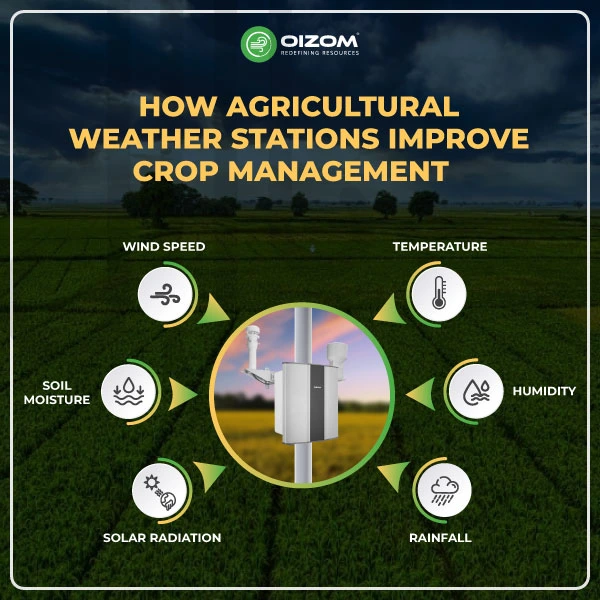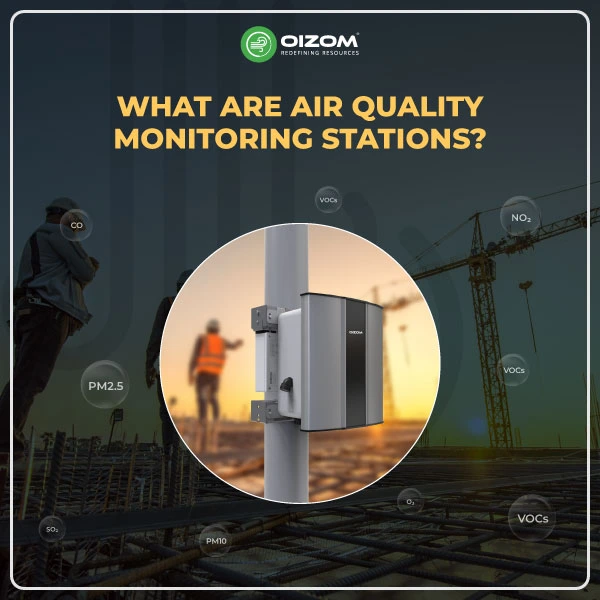Ground-level ozone is a multifaceted chemical compound with a conundrum of positive and negative attributes. In the upper atmosphere, it plays a vital role as a shield from harmful ultraviolet rays. Conversely, at ground-level, it manifests as a toxic pollutant with serious environmental and health risks.
The importance of understanding ground-level ozone cannot be overstated. It is associated with numerous impacts on both human health and the environment.
These far-reaching impacts encompass everything from agricultural yield reduction to exacerbating climate change. A comprehensive grasp of these issues is essential for devising mitigation strategies and safeguarding our ecosystem.
Oizom is at the forefront of tackling this challenge. Through innovative technology and pioneering air quality monitors, Oizom contributes to a future where understanding and managing ground-level ozone becomes achievable.
This blog aims to provide an in-depth exploration of ground-level ozone and its consequences. By breaking down complex scientific phenomena into accessible information, we will offer insights into how we can protect our environment and health.
Understanding ground-level Ozone
Ground-level ozone is not a simple pollutant. Its formation, characteristics, and impacts are multifaceted and warrant thorough examination. Let us understand it thoroughly.
What Is Ground-Level Ozone?
Ground-level ozone is created by chemical reactions between oxides of nitrogen (NOx) and volatile organic compounds (VOCs) in the presence of sunlight. Unlike stratospheric ozone, which protects the Earth from the sun’s ultraviolet rays, ground-level ozone is a harmful air pollutant.
Emissions from industrial processes, vehicular exhaust, gasoline vapours, and chemical solvents all contribute to ground-level ozone formation. Since it’s not emitted directly, its levels are heavily influenced by weather conditions and the concentration of precursor chemicals.
How Does It Differ from Stratospheric Ozone?
The difference between ground-level ozone and stratospheric ozone is vital to understanding why the same molecule can be both beneficial and detrimental. Stratospheric ozone, located 10 to 30 kilometres above the Earth’s surface, acts as a shield against harmful UV rays. In contrast, ground-level ozone, a major component of smog, harms human health, ecosystems, and the climate.
Oizom's Solution:
Oizom’s air quality monitors offer a technological edge in detecting and understanding ground-level ozone concentrations. With the capability to provide real-time insights into air quality parameters, these monitors are integral to urban planning and environmental management strategies.
By offering robust and accurate data, they empower communities to take preventive measures against the harmful effects of ground-level ozone.
Environmental Effects of ground-level Ozone
Impact on Plants and Crops
Ground-level ozone profoundly affects vegetation, including commercial crops, forests, and ornamental plants. Its toxic properties can lead to reduced growth, premature ageing, and lower yields.
For example, a study conducted in the European Union estimated a yield loss of over 10% for wheat and soybeans due to ground-level ozone exposure. These losses translate into economic burdens for farmers and threaten food security.
Furthermore, it’s not just crop plants that are affected. Tree species like black cherry and ponderosa pine have shown sensitivity to ozone exposure, affecting forest health and the lumber industry.
Effects on Ecosystems
The repercussions of ground-level ozone extend beyond individual plants to entire ecosystems. Its presence in the environment can alter soil chemistry, water quality, and even the species composition within a given ecosystem.
Some of the adverse effects on ecosystems include:
- Changes in nutrient cycles, particularly nitrogen cycling, lead to altered soil fertility.
- Reduction in species diversity as ozone-sensitive species decline.
- Alterations in water quality due to changes in plant composition and soil characteristics.
These transformations have ripple effects throughout the ecosystem, affecting everything from microorganisms to large mammals.
Ozone's Role in Climate Change
Ground-level ozone’s contribution to climate change is another critical concern. Acting as a short-lived climate forcer, it has a warming effect on the Earth’s climate. The Intergovernmental Panel on Climate Change (IPCC) has identified ground-level ozone as a significant factor in global warming, contributing to changes in weather patterns and extreme climate events.
Ground-level ozone also indirectly affects the climate by altering the ability of plants to sequester carbon dioxide. By inhibiting photosynthesis in plants, it reduces the amount of carbon drawn out of the atmosphere, thus exacerbating the greenhouse effect.
Health Impacts of Ground-Level Ozone
Respiratory Effects
Ground-level ozone’s effects on human health are deeply concerning, particularly regarding respiratory health. Short-term exposure can lead to coughing, throat irritation, wheezing, and shortness of breath. Long-term exposure has been linked to chronic respiratory diseases and reduced lung function and can even affect healthy individuals.
Children, the elderly, and those with existing respiratory conditions are particularly vulnerable. In the UK, it has been estimated that exposure to ground-level ozone contributes to thousands of hospital admissions and premature deaths annually.
Cardiovascular Effects
Beyond the respiratory system, ground-level ozone has potential cardiovascular effects. Research indicates that exposure to ozone can cause inflammation of the blood vessels, leading to conditions such as atherosclerosis, heart attacks, and other heart diseases.
The exact mechanisms of how ozone affects the cardiovascular system are still being explored, but the evidence points to a clear link between exposure and heart health. This adds another layer to the importance of monitoring and regulating ground-level ozone concentrations.
Monitoring and Regulation of Ground-Level Ozone
Effective monitoring and regulation of ground-level ozone are essential to mitigating its adverse effects. This requires not only advanced technology but also a coordinated effort between governments, industries, and communities.
Monitoring ground-level ozone levels allows for early detection of high-concentration events, facilitating timely interventions. By understanding where and when ozone levels are peaking, preventive measures can be implemented to protect public health and the environment.
Regulatory Landscape
In the UK, the Department for Environment, Food & Rural Affairs (DEFRA) sets guidelines for ground-level ozone concentrations. These are aligned with EU directives and WHO guidelines aimed at reducing exposure and minimising impacts.
Oizom's Role:
Oizom’s comprehensive monitoring solutions have emerged as a powerful tool in the environmental industry’s efforts to understand and combat the harmful effects of ground-level ozone. With state-of-the-art sensors, user-friendly interfaces, and cutting-edge analytics, Oizom’s products are not just instruments but partners in a global effort to create a cleaner, healthier environment.
Mitigation and Prevention Strategies
Mitigating ground-level ozone’s effects necessitates a multifaceted approach. Strategies range from technological interventions to regulatory policies and individual actions.
- Industry Regulations
Regulations on industrial emissions of NOx and VOCs are crucial. Industries can significantly reduce their contribution to ground-level ozone formation by implementing stringent emission standards and encouraging cleaner technologies.
- Urban Planning
Smart urban planning, including green spaces and public transportation, can mitigate the impacts of ground-level ozone. Cities can actively combat ozone pollution by reducing traffic congestion and enhancing green cover.
- Personal Choices
Individual actions, such as reducing vehicle usage, choosing public transport, and using eco-friendly products, make a significant difference. Public awareness and participation in mitigation strategies are vital for a collective response to this global challenge.
Conclusion
Ground-level ozone is more than a mere environmental issue; it’s a complex challenge that intertwines human health, economics, agriculture, and climate change.
The broad spectrum of impacts necessitates a comprehensive understanding and a concerted effort to mitigate its harmful effects. Recognizing the role of the ozone layer in maintaining cleaner ground-level air adds important context, highlighting how atmospheric stability influences surface-level pollution trends.
Oizom’s pioneering air quality monitors offer a promising pathway to a future where ground-level ozone is monitored, understood, and managed effectively. By embracing technological innovations and implementing robust mitigation strategies, we can safeguard our planet for future generations.
Frequently Asked Questions (FAQs)
A harmful pollutant is formed through chemical reactions between NOx, VOCs, and sunlight on Earth's surface.
It forms through a complex reaction between nitrogen oxides, volatile organic compounds, and sunlight.
Sources include industrial facilities, motor vehicle exhaust, and chemical solvents.
It leads to reduced growth, leaf discolouration, and crop yields.
Oizom's advanced air quality monitors provide an accurate and comprehensive solution for monitoring ground-level ozone. You can check here for a detailed answer.






